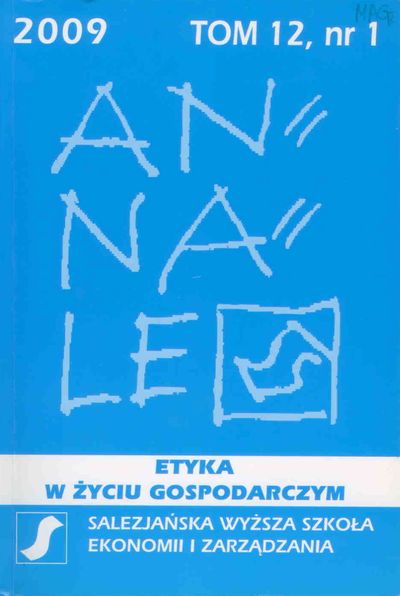Moralny aspekt "niewidzialnej ręki" w interpretacji Petera Koslowskiego
DOI:
https://doi.org/10.18778/1899-2226.12.1.05Słowa kluczowe:
Peter Koslowski, Invisible Hand, homo oeconomicusAbstrakt
Peter Koslowski’s project of ‘ethical economy’ can be understood as an effort to search for human face of late capitalism. In his perspective ‘ethical economy’ is not a simple combination and connection between economy and ethics but is a new approach which includes three fields: theory of ethical premises of economy, concept of ethics profiled towards needs of economy and ethical and economical theory of goods and cultural values. Koslowski reinterprets problems of maximization found in classical economy. He criticizes the model of homo oeconomicus as the model of a reactive man not understood as activated. According to Koslowski, economical theory of market balance also requires reinterpretation. Without assuming that teleology belongs internally to social reality and therefore to market as well, so to create environment for development of human subjectivity, there cannot exist any theory of legitimization of individualistic economic institutions which protect freedom. Without that, Koslowski claims, there can only be theory of social process authority in which the strongest reinforce their positions. Taking subjectivity and auto-referential character of a human being into consideration is the ontological basis, which allows to reach ethical dimension of decision-making processes and responsibility. By analogy, the mechanism of ‘invisible hand’ requires referring to common good. In the age of globalization ‘invisible hand’ is a source of evil.Bibliografia
Hodgson B., Introduction [w:] The Invisible Hand and the Common Good, red. B. Hodgson, Springer-Verlag, Berlin 2004.
Google Scholar
DOI: https://doi.org/10.1007/978-3-662-10347-0
Koslowski P., Ethics of Capitalism and Critique of Sociobiology, Springer, Berlin 1996.
Google Scholar
DOI: https://doi.org/10.1007/978-3-662-03311-1
Koslowski P., Principles of Ethical Economy, Kluwer Academic Publishers, 2001.
Google Scholar
DOI: https://doi.org/10.1007/978-94-010-0956-0
Pobrania
Opublikowane
Jak cytować
Numer
Dział
Licencja

Utwór dostępny jest na licencji Creative Commons Uznanie autorstwa – Użycie niekomercyjne – Bez utworów zależnych 4.0 Międzynarodowe.









